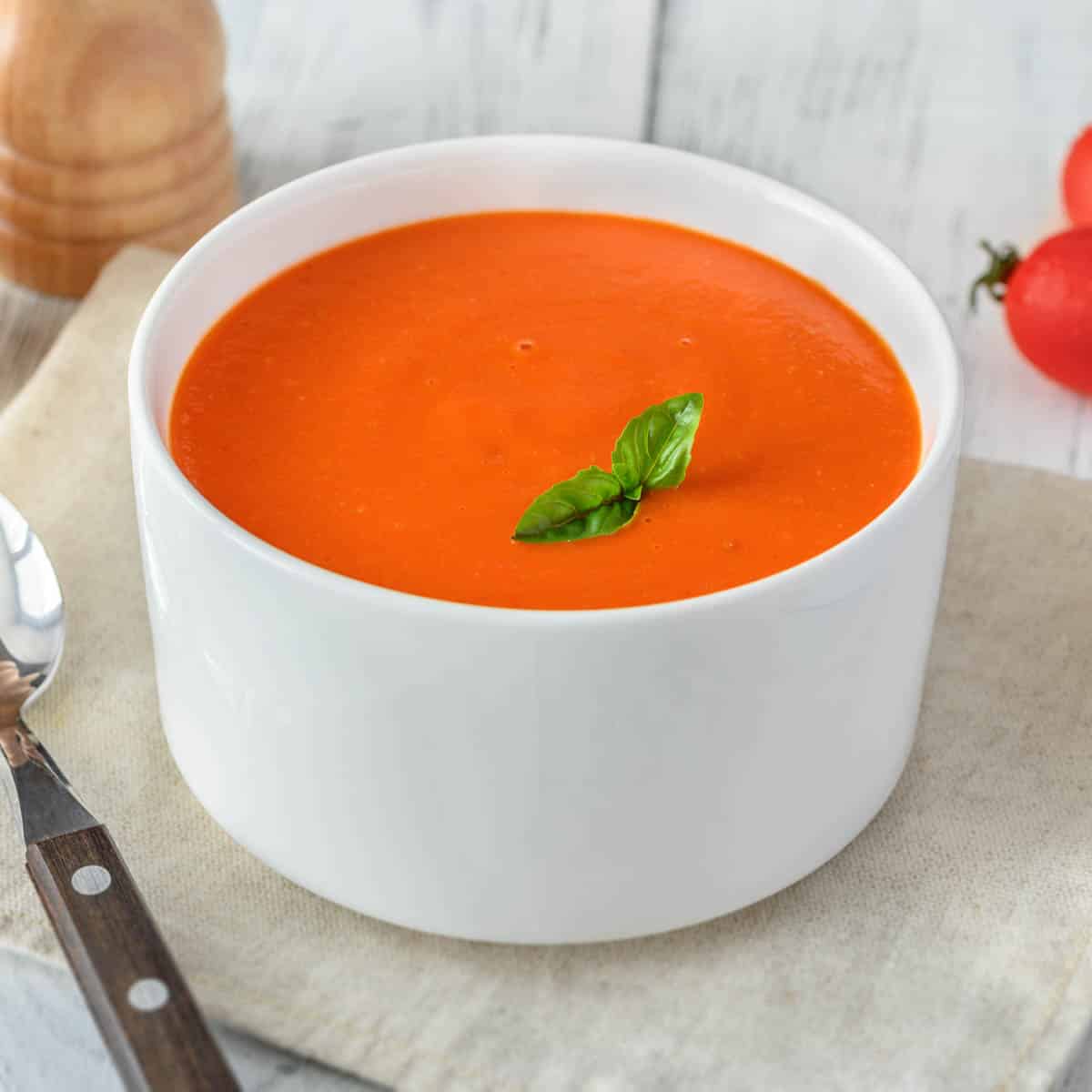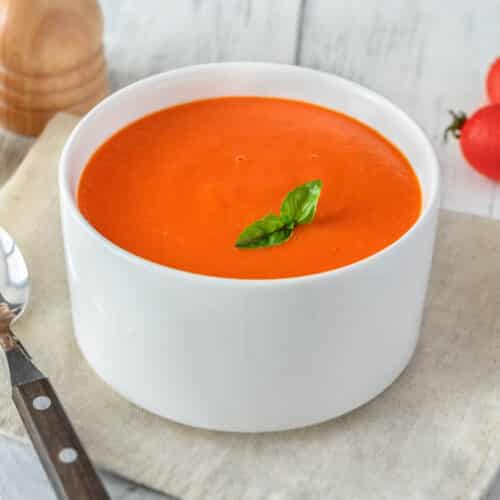How To Freeze Soup
Freezing soup is a fantastic way to enjoy a hearty meal on a chilly evening or even a light lunch on a warm afternoon without having to cook from scratch each time.
Whether it’s a chunky vegetable soup, a silky smooth tomato bisque, or a robust chicken noodle soup, freezing and reheating can help retain the flavors and freshness for months.
Here’s a comprehensive guide on how to freeze soup effectively and efficiently.

To freeze soup, let it cool, skim off the fat if needed, and portion it into freezer-safe containers. Leave an inch of headspace for expansion, secure the lids tightly, label them with the date, and place the containers flat in the freezer. For optimal quality, consume frozen soup within 2-3 months.
The Basics of Freezing Soup
Before we dive into the nitty-gritty of how to freeze soup, it’s essential to understand a few basics about this process.
Safety
Always allow your soup to cool down completely before freezing it. Placing hot soup directly in the freezer can lower the temperature of your freezer, causing other foods to partially thaw and potentially promoting bacterial growth.
For a comprehensive guide on safe food handling, you can refer to the guidelines provided by the FDA.
Freezing and Soup Quality
While freezing can extend the shelf-life of your soup, the texture of certain ingredients might change after thawing.
Ingredients like pasta and rice may become mushy once reheated. To prevent this, consider freezing the soup without these ingredients and adding them when reheating.
We have detailed guides on how to freeze rice and freeze pasta separately if you’d like to use this approach.
How To Freeze Soup
- Let it cool: After cooking the soup, let it cool down at room temperature for about 30 minutes. To speed up the cooling process, you can place the soup into a cooled pot or bowl and then into an ice bath.
- Skim off the fat: If the soup contains meat, there might be a layer of fat on top. Skim this off for better freezing results.
- Portion the soup: Divide the soup into meal-sized portions. This way, you can easily thaw only what you need, preventing wastage.
- Fill the containers: Leave about an inch of headspace in each container to allow for expansion as the soup freezes.
- Seal tightly: Ensure the lids are securely tightened to prevent air from entering the container.
- Label: Write the type of soup and the date of freezing on the containers to keep track of your meals.
- Freeze: Place the containers in the freezer, ensuring they sit flat.
Choosing the Right Containers
Selecting the right storage methods is critical to ensure your soup stays fresh and tasty. Whether you choose containers or plastic bags, there are certain aspects you should consider.
Size
When freezing soup, consider portioning them into meal-sized servings. Containers or bags that hold one to four servings are ideal. This way, you won’t need to defrost more soup than you can eat at a time.
Material
Choose BPA-free plastic, glass, or stainless steel containers for freezing soup. If you’re using plastic bags, make sure they are designed for freezer use to prevent leaks or tears.
Lids
Choose containers with airtight lids to prevent freezer burn. If you opt for freezer bags, ensure they have a robust seal. Removing as much air as possible before sealing can also help maintain the quality of the soup.
Shape
Opt for stackable containers or flat-laying freezer bags to maximize freezer space. Plastic freezer bags can be particularly space-efficient.
After they’re filled and frozen flat, they can be stacked or even filed upright, much like a file folder.
There’s no one-size-fits-all solution to storing soup. The best option depends on your personal needs, including the size of your freezer, how quickly you plan to consume the soup, and your preferred reheating method.
Here’s a table comparing the different types of containers:
| Plastic Container | Glass Container | Plastic Bag | |
|---|---|---|---|
| Durability | Moderate: Can crack in extreme cold | High: Very durable, but can break if dropped | Moderate: Can puncture or tear, handle with care |
| Storage Space | Moderate: Depends on shape and size | Low: Typically bulkier and harder to stack | High: Bags can be laid flat and stacked, saving space |
| Ease of Use | High: Easy to fill, seal, and store | High: Easy to fill, seal, and store | Moderate: Filling can be tricky without a second pair of hands, but they’re easy to store |
| Cost | Low to moderate: Reusable for long periods | Moderate to high: Higher initial cost, but highly reusable | Low: Generally cheaper but may need replacing more often |
Remember, whichever option you choose, make sure that it’s suitable for freezer use to avoid any potential issues with food safety or container durability.
How Long Can Soup Stay Frozen?
Frozen soup maintains optimal quality for about 4 to 6 months when stored correctly, continuously frozen at 0°F.
Although safe to eat beyond this period, it may lose some flavor and texture. It’s advisable to consume frozen soup within 6 months for the best experience.
Always label containers or bags with the freezing date for easy tracking.
What Kinds of Soup Can I Freeze?
You might be wondering if there are specific soups that freeze better than others. The good news is that most soups freeze wonderfully!
From hearty meat stews to seafood chowders to classic tomato soup, there are a plethora of options to prepare and freeze for later consumption.
For example, a classic Chicken Noodle Soup made from scratch with a whole chicken is a fantastic candidate for freezing. Just remember to add the noodles when you’re reheating the soup to maintain the best texture.
Frequently Asked Questions About How To Freeze Soup
Conclusion
Freezing soup is a game-changer for meal prepping, allowing you to enjoy homemade soup anytime with minimal effort.
Remember, the key to freezing soup is to cool it properly, choose the right containers, portion it wisely, and thaw it safely.

How to freeze soup
Equipment
- BPA-free plastic, glass, or stainless steel containers
- Ladle
Ingredients
- Soup of your choice
Instructions
- Allow the cooked soup to cool for about 30 minutes at room temperature.
- If needed, skim off the fat layer from the soup.
- Portion the soup into meal-sized servings.
- Fill your chosen containers with the soup, leaving about an inch of headspace.
- Secure the lids tightly on the containers to prevent air entry.
- Label the containers with the type of soup and date of freezing.
- Freeze the soup flat in your freezer.
- To reheat, thaw in the refrigerator for 24 hours, then heat on the stove over medium heat.

Online Cooking for Beginners Course